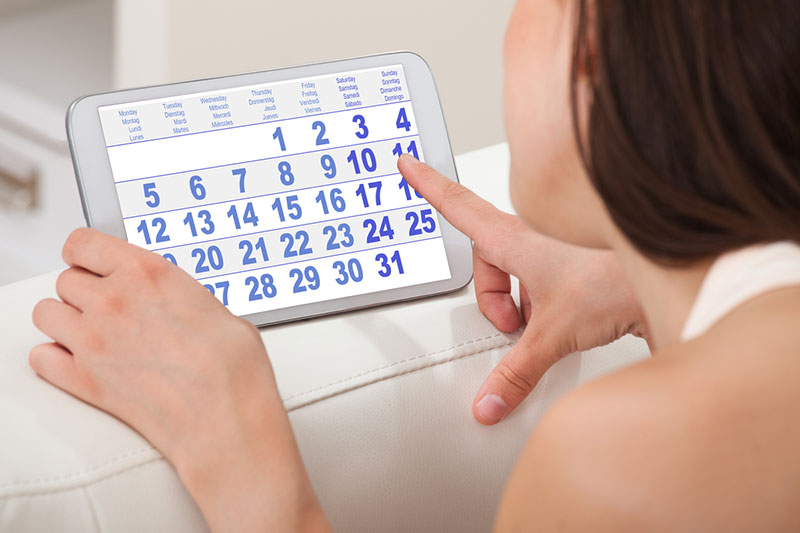
Receiving a COVID-19 vaccine during the first half of the menstrual cycle is linked to a small, temporary increase in cycle length, suggests a study funded by the National Institutes of Health. Analysis of data from nearly 20,000 people indicates that those vaccinated during the follicular phase—the part of the menstrual cycle leading up to ovulation—are more likely to experience a cycle length increase than those vaccinated during the luteal phase, which begins after ovulation. The findings provide additional information about what to expect after COVID-19 vaccination, potentially helping to reduce vaccine hesitancy.
The work was led by Alison Edelman, M.D., M.P.H., of the Oregon Health & Science University and funded by NIH’s Eunice Kennedy Shriver National Institute of Child Health and Human Development (NICHD) and Office of Research on Women’s Health. The findings are published in Obstetrics & Gynecology.
Background
NICHD-supported research has established that COVID-19 vaccination is associated with a small, temporary increase in menstrual cycle length. Although most of these changes are within the normal range of variation, they may be alarming to those who experience them and could contribute to fears and anxiety around vaccination. Researchers are working to better understand the mechanisms by which COVID-19 vaccination may affect menstrual cycles.
Hormones act as signals to control menstrual cycle timing. Stressors such as an immune response can disrupt this tightly controlled signaling and lead to longer cycle lengths, particularly when the stress occurs during the follicular phase. Scientists therefore surmised that the timing of COVID-19 vaccination may be an important factor in the observed changes in cycle length.
Results
The researchers analyzed data from 19,497 users of the Natural Cycles menstrual tracking app who had regular cycles before vaccination. The app’s ovulation prediction algorithm allowed the scientists to distinguish between those who received a COVID-19 vaccine during the follicular phase of their cycle and those who received it during the luteal phase. They compared data from these groups to data from a group of app users who did not receive a COVID-19 vaccine.
On average, individuals who received a COVID-19 vaccine during the follicular phase experienced a one-day increase in the length of the cycle in which they were vaccinated. Changes typically resolved in the cycle after vaccination. Those who were vaccinated during the luteal phase or did not receive a COVID-19 vaccine experienced no change in cycle length.
Significance
The results indicate that the timing of COVID-19 vaccination drives the temporary increases in menstrual cycle length seen after vaccination, supporting the theory that vaccine-induced immune responses during the follicular phase may affect the hormonal signaling that controls cycle length. “It’s helpful for us to understand why a change may happen, and these findings provide some insight into that,” said Dr. Edelman. “We hope this work helps validate the public’s experiences and ease fears and anxiety around vaccination.”
Next Steps
The authors call for additional work to establish whether their observations apply to people who experience irregularities in their cycle. They also hope to better understand how vaccination timing may affect other aspects of the menstrual cycle such as flow.
Reference
Edelman A et al. Timing of COVID-19 vaccination and effects on menstrual cycle changes. Obstetrics & Gynecology DOI: 10.1097/AOG.0000000000005550 (2024)
 BACK TO TOP
BACK TO TOP